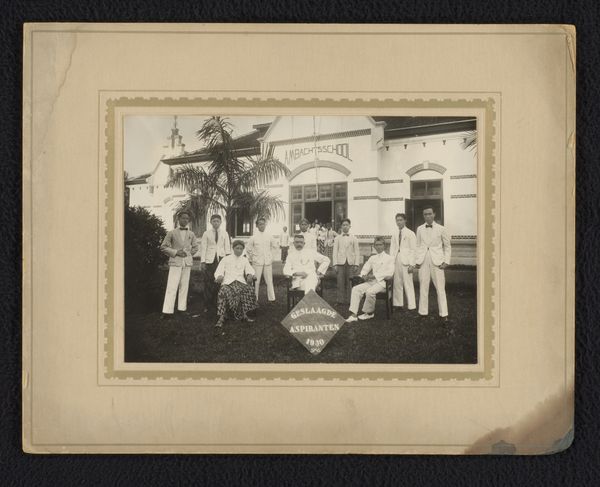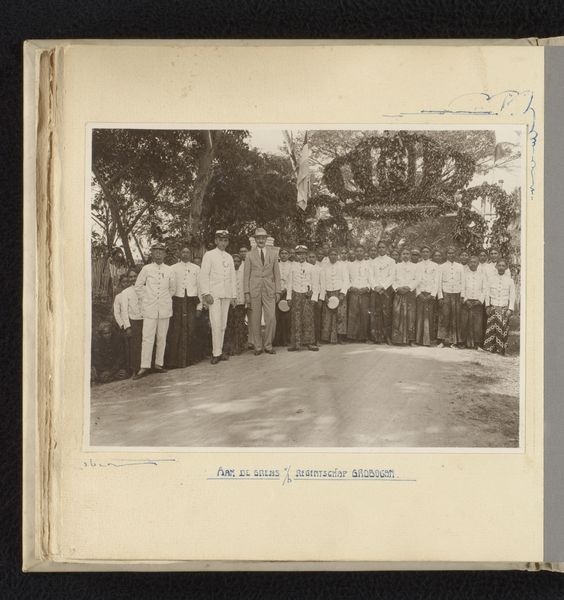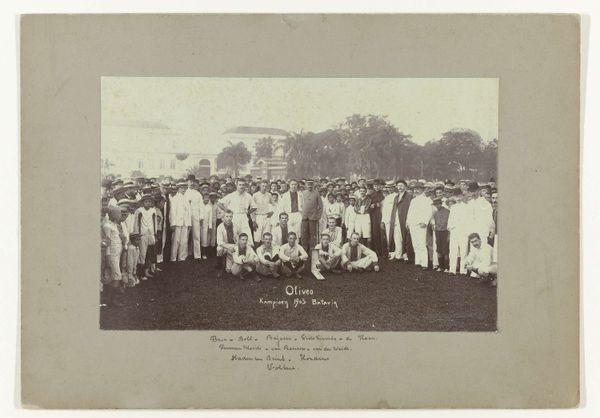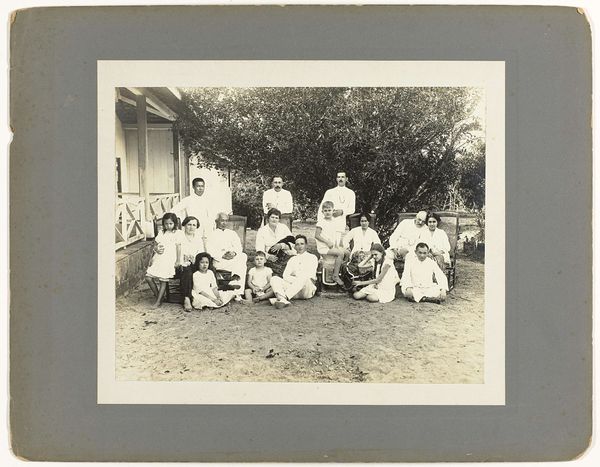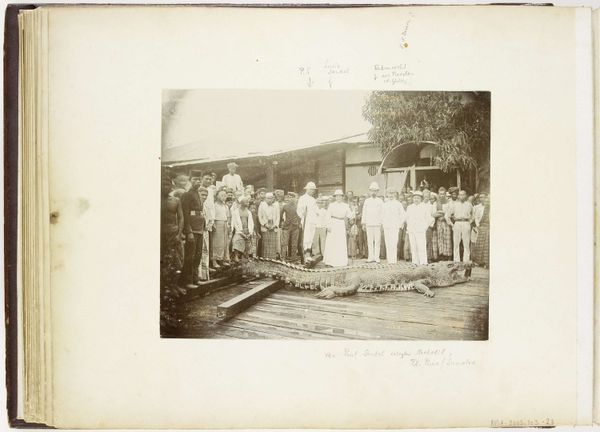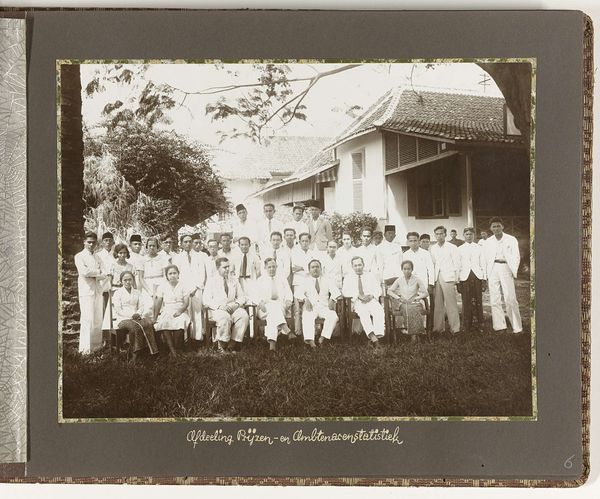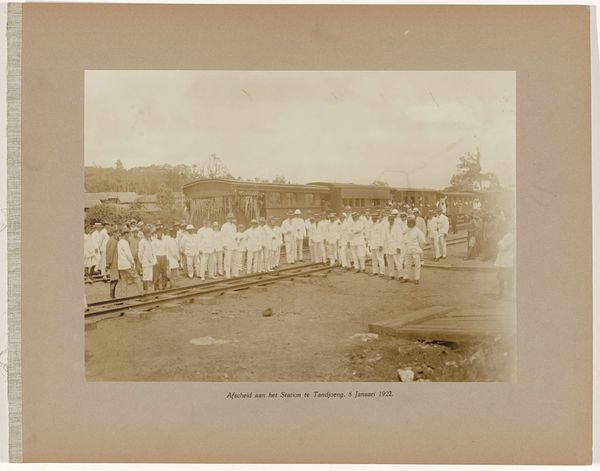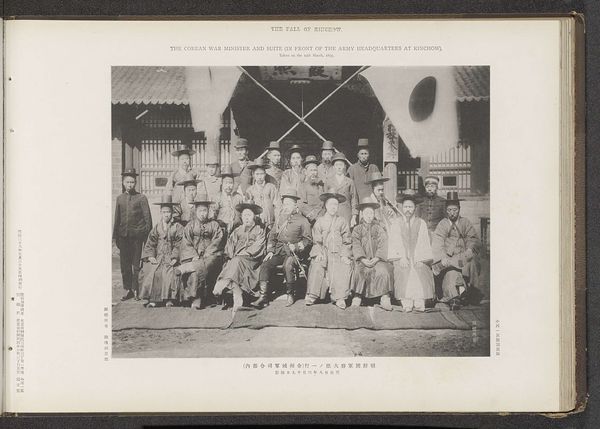
photography, gelatin-silver-print
#
portrait
#
photography
#
group-portraits
#
gelatin-silver-print
Dimensions: height 170 mm, width 230 mm
Copyright: Rijks Museum: Open Domain
This photograph, by Otto Hisgen, captures a moment in time using the then relatively new medium of photography. Consider the materiality of this image: the gelatin silver process, which renders a range of grayscale tones from the chemical interaction of light, silver, and photographic paper. Photography democratized portraiture. Before its invention, group portraits were the domain of the wealthy, captured through laborious painting processes. Here, the stark uniformity of dress and pose suggests a group defined by labor, perhaps maritime workers. Photography offered a quicker, more reproducible means of documentation, reflecting a shift towards industrial modes of production. The photograph’s inherent ability to capture detail – the texture of clothing, the individual expressions – contrasts with the collective identity presented. It’s a study in contrasts: the individual versus the group, the unique versus the reproducible. By emphasizing the photographic process and the social context of its creation, we can better appreciate the photograph not just as a record, but as a cultural artifact embedded in the history of labor, representation, and technology.
Comments
No comments
Be the first to comment and join the conversation on the ultimate creative platform.

